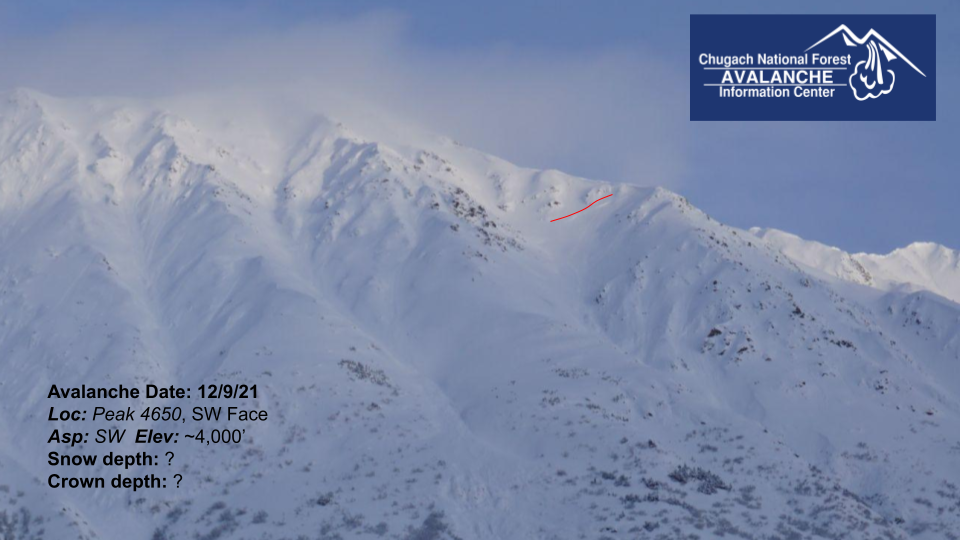Turnagain Pass
|
|
The avalanche danger is CONSIDERABLE at all elevations today. Human triggered avalanches 1-3′ deep are likely especially in wind loaded areas. Winds during the last storm were out of the east but are currently blowing out of the northwest, so wind slabs could exist on a variety of aspects. Very large and destructive avalanches in a layer of weak sugary snow buried 3-6′ deep are also likely and could be triggered by a person or a smaller avalanche. These avalanches have the potential to be triggered remotely (from above, below, or to the sides of steeper terrain) and could release much wider than expected. Conservative terrain selection and being aware of steeper slopes above you is essential to manage these dangerous avalanche conditions.
Summit Lake: Despite not getting much new snow during the last storm a recent human triggered avalanche on a layer of buried facets indicates that the potential still exists for triggering avalanches on older buried weak layers. Summit area could see stronger winds today that may build new wind slabs.
Seward/Snug Harbor: We received a report of frequent collapsing/whumphing and a small remote triggered avalanche in Seward yesterday (see recent avalanches). In areas that received strong winds and have a weak existing snowpack human triggered avalanches are very likely today. These could be 1 to 3′ deep in the most recent storm snow or release on buried weak layers 3 to 6′ deep resulting in very large and destructive avalanches.






